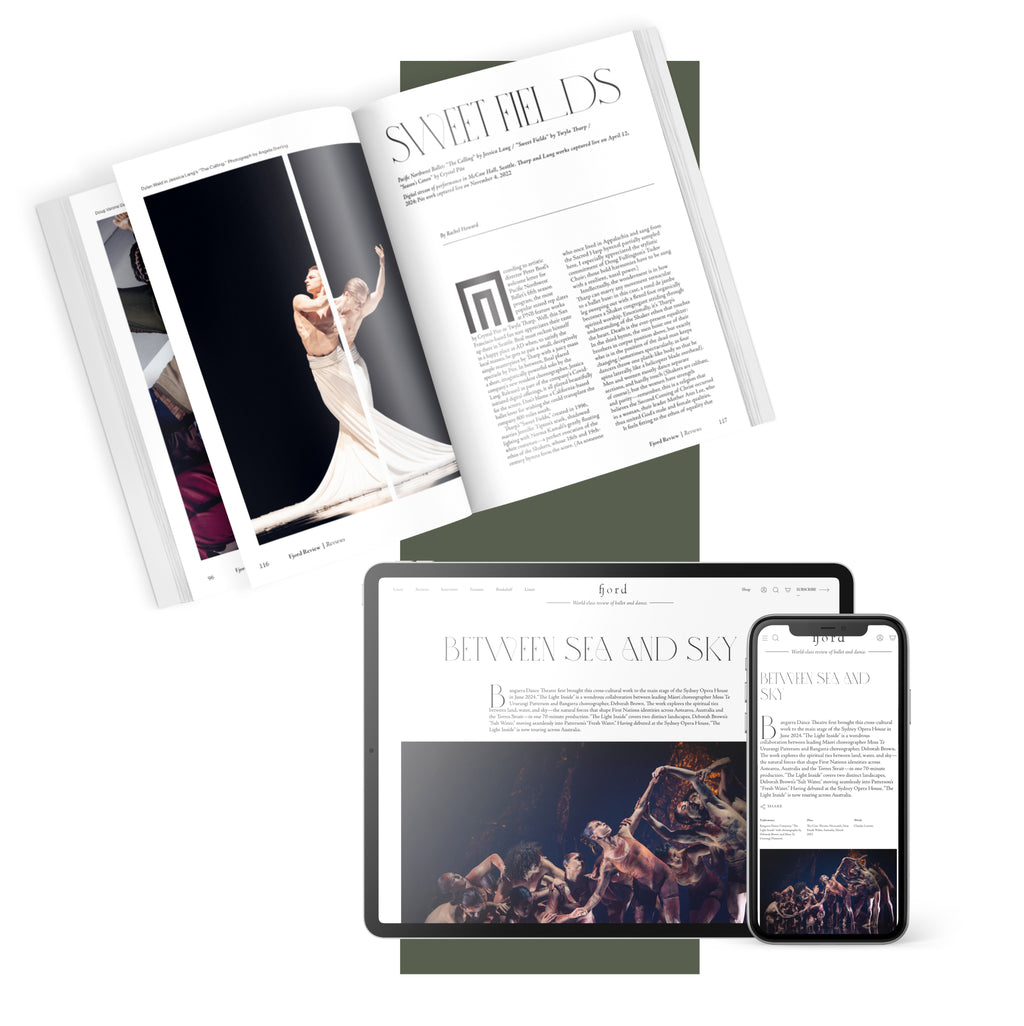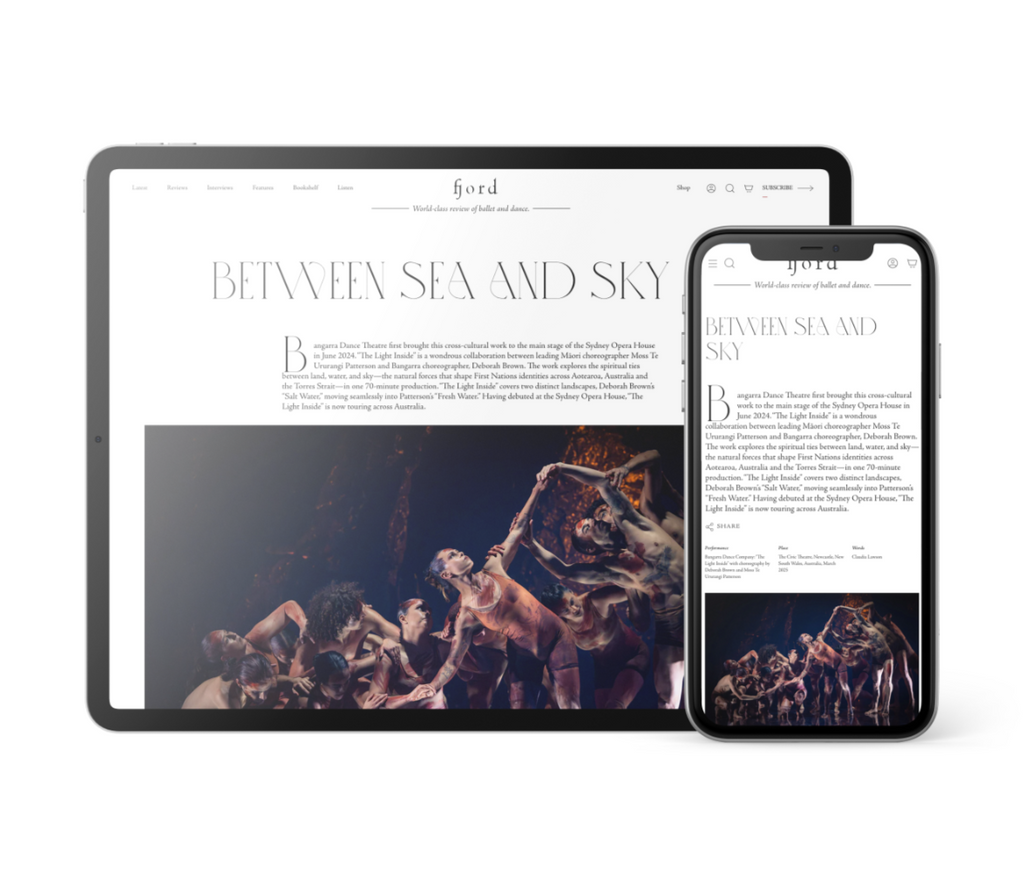Going back to what we know about Act II of the Romantic ballets, we are prepared to find retribution and redemption in the supernatural. Here, Holzinger’s imagery brings to mind “La Sylphide.” Our four ballet students are now sylphs performing in pas de bourrées en pointe amidst the fog shrouded forest. Our witch is now Madge, in full hooded cape with long crooked nose. A wolf crouches and makes slurping sounds. And what’s going on with two woman and a massage table at upstage left?
The video camera zooms into the lap of Cordua in the wheelchair as she graphically gives birth to a rat. After that, basically all hell breaks loose. There’s a papier mâché pinata, several ghosts in white bedsheets, a paint gun, revving of the hanging motorcycles, impalement of the wolf. The sylphs crouch bloody, as if in the final scene of “The Dying Swan.” The piece de resistance is a ritualized bit where a rigger hangs a performer by the “wings” of her back, her skin impaled with hooks. We watch the piercing/impaling process close-up via the video camera. Not for the faint of heart. Once in the air, the performer strikes a position of flight, arms wide, feet (clad in chunky athletic shoes) peddling the air. She beams a state of ecstasy, but her “flight” is not beautiful. And far from ethereal.
Act II is so in-your-face that it has taken some post show reflection to appreciate how smart it is. Holzinger has gathered an array of references that in the hands of another scholar, might end up as a thesis dissertation. Holzinger instead chooses to toss them into the air to rain down on us with their full metaphorical weight. At the end of “Tanz,” I felt like I’d been through a war. Unlike a viewing of “Giselle,” where I’ve cheered on the Willies from the distance of a plush velvet auditorium seat, this time I joined them in their vengeful pas de bourrée.











Great review! I’m sorry I couldn’t get to this show!